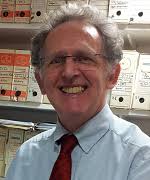
Professor Stephen Perkins
The aHUS alliance spoke to Prof. Perkins about his , and his team’s , work on the Database of Complement Gene Variants which featured in a previous news item on this website.
Prof Perkins told the alliance: “I have had a long standing interest in the genetics and protein structures of the complement proteins. Because the complement proteins in immunity have similarities with proteins associated with bleeding disorders, I started working with these too. I looked at von Willebrand disease when I successfully predicted the consequences of genetic variants in von Willebrand Disease, and was awarded the Angelo Bianchi Bonomi Prize in 1998 for this. It became the natural thing to move into a database for the complement proteins themselves, as well as developing those for the haemophilia proteins.”
The alliance enquired “ Is there any thing else like it and does it contain all variants ever found?”
Prof Perkins answered “The first version of this website was created in 2004 and covered Factor H only. As more genetic data appeared, it was expanded to include Factor I and Membrane Cofactor Protein in 2007, then again to include C3 in 2014. The current version of the website was released in 2018 and includes genetic rare variants for 13 proteins found in six clinical centres*, totalling 610 in all from more than 3500 patients. It is as complete as we can make it, but new variants are reported all the time. We have also been developing these databases for haemophilia patients, and we have published several web databases for these proteins.”
The alliance then asked him “How do new mutations found, get recorded in it to keep it current?”
The Professor explained “We need staff resources for this. We have worked with PhD students in my research group, or with summer students who come in the Long Vacation. They collect updated summaries of the variants from publications and contacting past collaborators, and putting these variants online.”
Finally the alliance sought to know “Who uses the database and for what reasons?
“ The old database ( www.fh-hus.) with 324 variants recorded 30407 hits by October 2019,and the new database with 610 variants recorded 30835 hits in October 2019 ( Note the two databases merged in March 2018 when the recorded hits stood at 27608) .The database is there as a resource for renal clinicians in hospitals worldwide who can check out the outcome of the genetic analyses of their patients to see if their variant is a new one or has been previously observed. Scientists who do basic research on the complement proteins and their interactions will also find the database very useful to clarify their investigations.” was Professor Perkins reply.
The team at UCL in collaboration with international aHUS expert centres* in Iowa, Bergamo, Newcastle upon Tyne , Paris , Madrid and Nijmegen are providing an answer to aHUS patients’ question “ Are the genetic predisposing factors of aHUS fully catalogued?” , which is “yes as best as they can do”.
The alliance thanked Prof. Perkins for the work he and his team do for the benefit of aHUS patients. The aHUS patient community is fortunate that our rare disease has been the focus of research by many eminent scientists and clinicians around the world.
The question however “ What can patients do with the knowledge of their genetic susceptibility to aHUS ?” perhaps that is one that Global aHUS patients and their families themselves can provide some answer.
Note: featured image is of a protein structure from the database , UCL (c)

